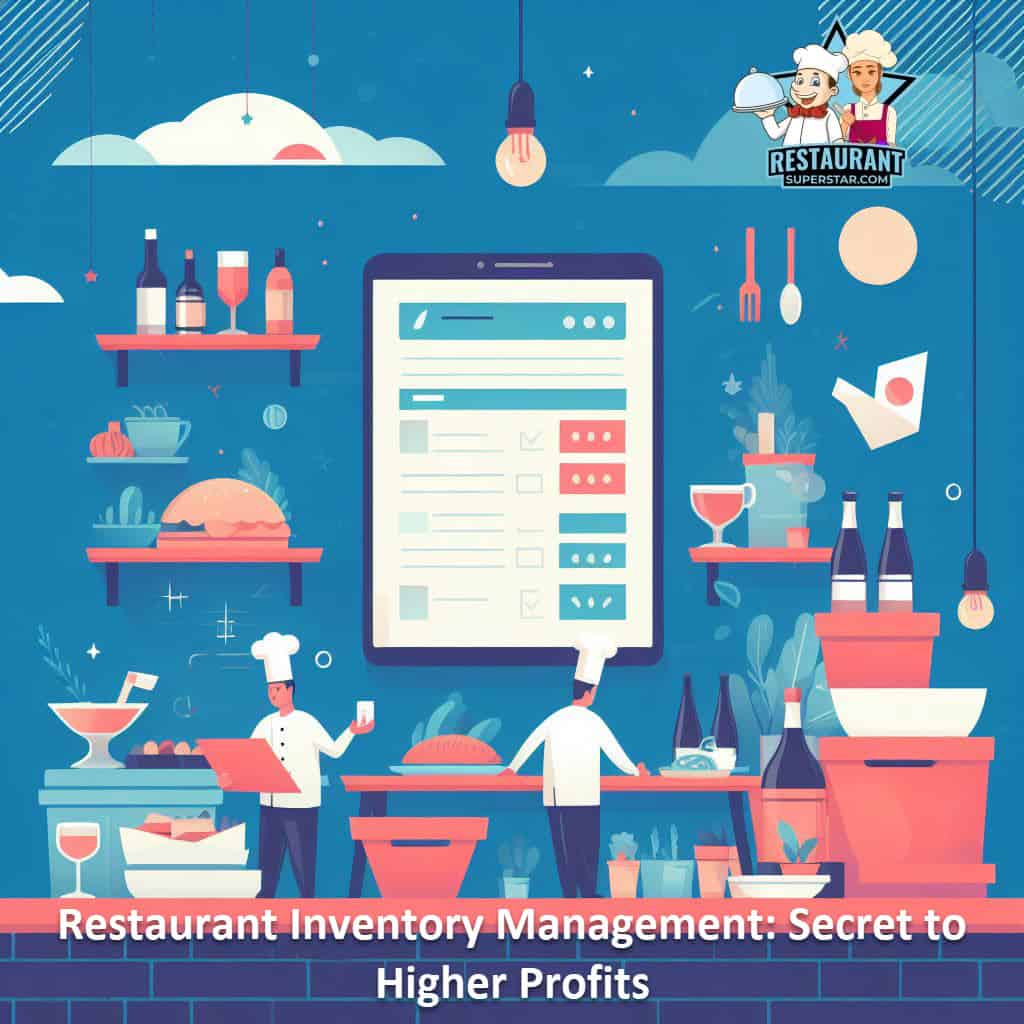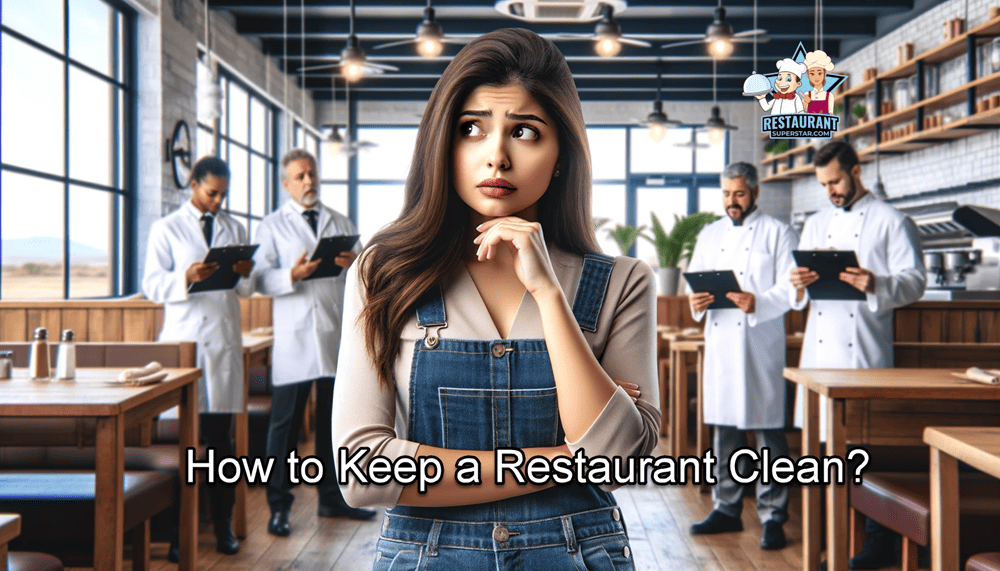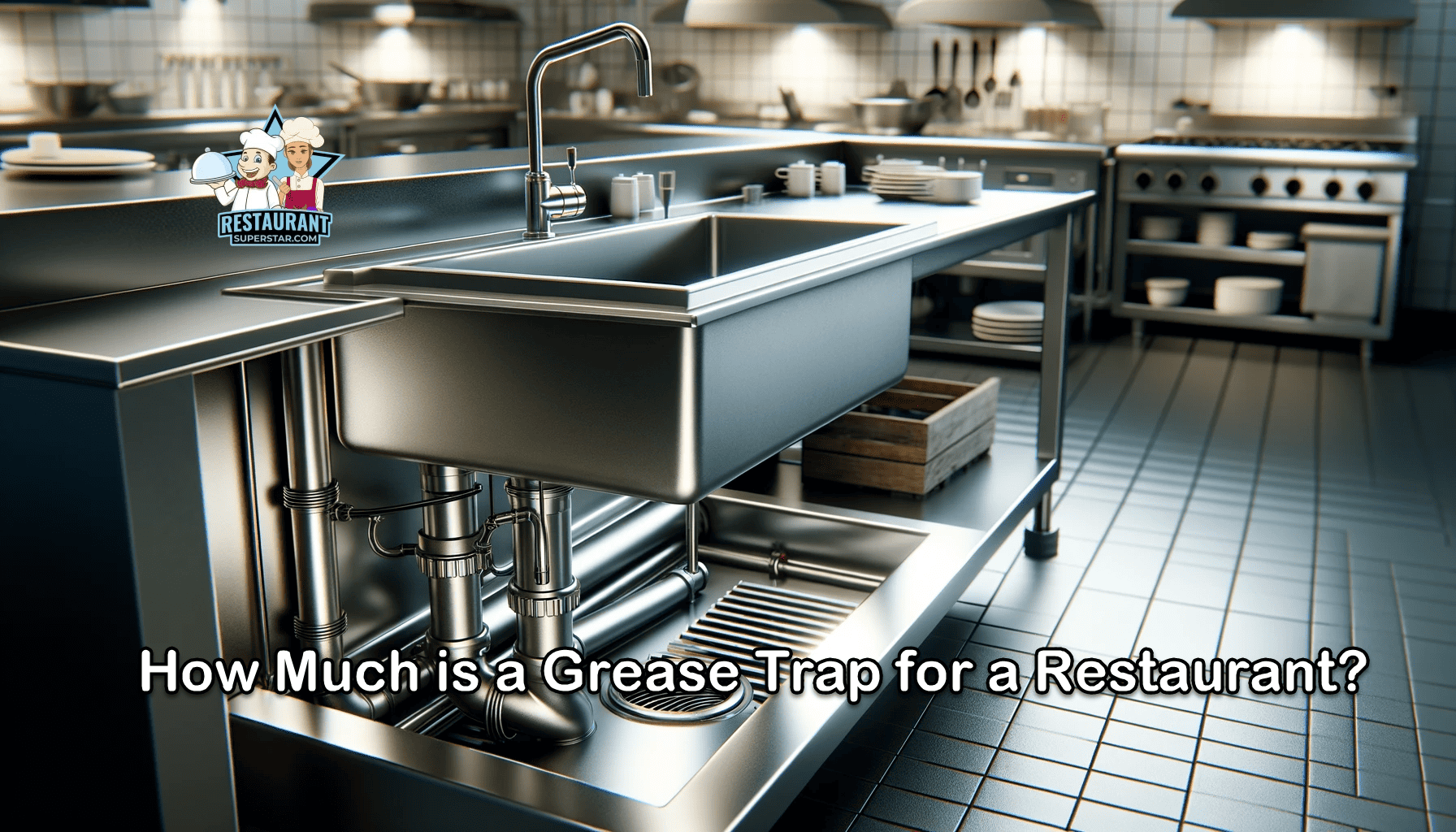How to Clean a Restaurant Floor Drain Super Easily

Hey there … welcome to our site. If you’re a restaurant owner looking for information on how to clean a restaurant floor drain, you have come to the right place.
This article will give you the information you’re looking for. We will also answer several other questions about restaurant floor drains.
By the time we’re done, you will know so much you will be able to start your restaurant drain cleaning business.
How to clean a restaurant floor Drain
Want to know how to clean a restaurant floor drain? Put on disposable gloves. Remove any trash on top of the drain cover. Remove the cover. Clean the drain cover in the sink. Use hot water to diffuse the grease. You can also use baking soda and apple vinegar. Finish the job with more hot water.
On a busy day in a restaurant kitchen, you see food, trash, and other debris on the kitchen floor.
This debris is washed and deposited into the floor drain daily, and drainage slows and stops. Regularly cleaning the drainage system helps to prevent it from getting blocked.
How to Clean a Restaurant Floor Drain – Step-by-Step
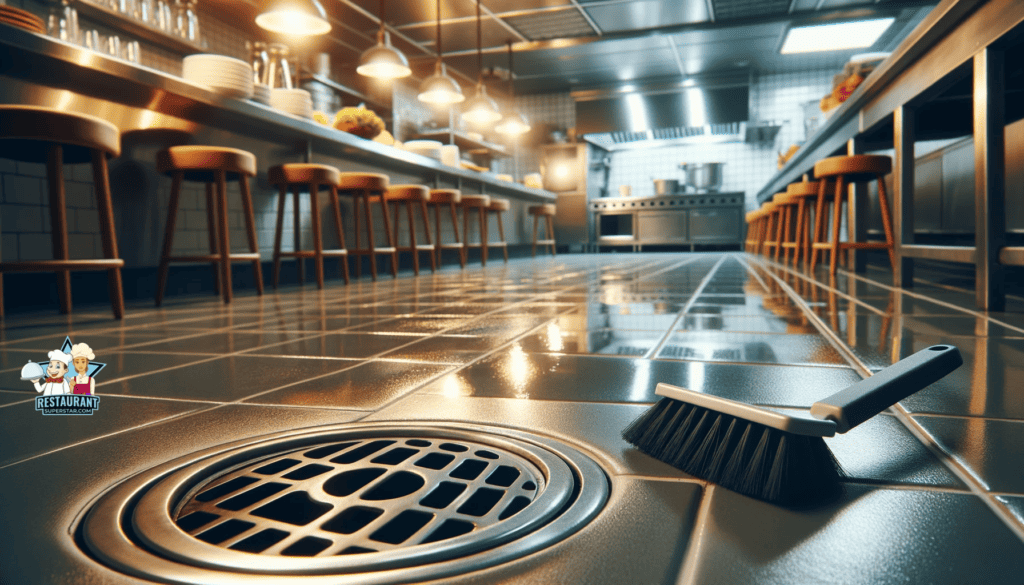
Begin by sweeping out any trash
- Wearing disposable gloves, use a screwdriver to remove the drain cover
- Clean the drain cover in the sink with Water
- Remove any particles on the surface of the drain on the floor.
- Use hot water to run down through it to diffuse or dissolve any clogged grease around the drain. It also helps to clear away the mass grease inside the drainage system.
- Another way to go about it is using baking soda alongside Apple vinegar.
- Mix them both in a blow, and then, after some time, it fizzes. With that, you pour it right into the drain opening.
- Then you wait 15 minutes, pour more hot Water, and put the drain cover back.
- Many people fall into the trap of using harsh chemicals, but I’d advise against that.
- That’s it!
How Do You Prevent Fat Build-up in a Restaurant Drain?
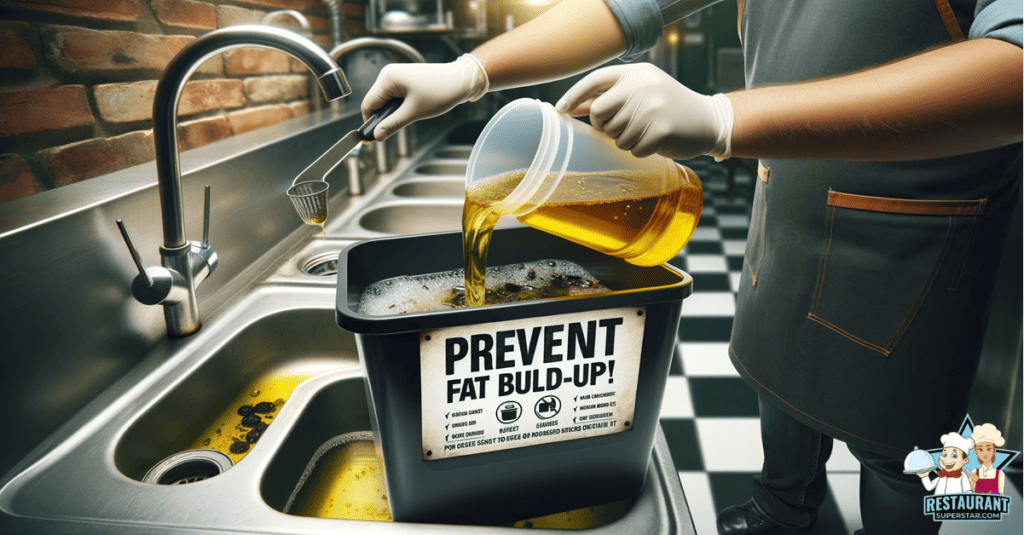
Fat build-up from restaurants and other food service establishments can cause severe problems in the drainage system, affecting many people and businesses. I’ll be providing some tips to prevent fat build-up in your drains.
1 – Avoid the use of garbage disposal.
When too many food solids are flushed down the kitchen drains, it reduces your grease interceptor’s efficiency, resulting in grease being discharged to the sewer.
Instead of using the disposal. First, scrape off the plate into a garbage can or composting bin.
Rinse dishes with cold water over a catch basket and put those food scraps into the garbage.
2 – Keep waste grease buckets handy.
These receptacles are used for liquid oil and grease from pot pans, dryers, and grills.
Please keep them in a convenient location, such as under the sink and near the cooking areas.
Make sure to empty these into your grease recycling bin when necessary.
3 – Boil deep fryers only when necessary.
Pour the boiling water into a sink that flows into your Interceptor or skim from the grease layer after it cools and disposes of it properly.
Make sure your grease recycler will accept this type of grease before putting it into the recycling bin.
4 – Microbial and enzymatic cleansers should be avoided.
Some municipalities have restrictions in their sewer use ordinance against using there. Check with your local pretreatment Program or wastewater treatment plan.
5 – Don’t mop Water only through drains connected to your grease interceptor
Much of the grease from a commercial-sized kitchen comes from the floors. If your mop sink is not connected to your Interceptor, allow the mop water to sit overnight.
Skim the grease off the top and dispose of it properly. Do not put this grease into your recycling bin.
6 – Clean your grease interceptor or trap frequently.
I will explain the difference between a grease trap and a grease interceptor since they will require different cleaning frequencies.
A grease trap is a small device that is located under the sink. For it to work effectively.
It should be cleaned very frequently, possibly every day. Many traps are difficult to open, and the grease must be removed manually.
This trap, however, has a convenient spigot for emptying the grease, making it much easier to clean.
This grease trap separates oil and grease from the wastewater by heating the water and skimming the floating oil off the top. It then empties a liquid grease into a waste grease container.
It requires frequent cleaning and maintenance and may need to be emptied daily if the waste grease contains contaminants such as detergents or chemicals.
It should not be recycled, and some municipalities do not accept grease traps as an effective means of grease control.
Check with your local Building Codes inspector or your local industrial pretreatment program.
A grease interceptor is the most efficient device for grease collection. It is a large two-compartment concrete tank with a baffle between the compartments.
It is usually located outside, with a manhole cover over each side for cleaning and maintenance.
It slows the flow long enough for the wastewater to cool and separate into three layers.
The grease rises to the top, and the Water flows through the middle. The solids settle out to the bottom of the inlet, and outlet pipes are positioned so that, if properly maintained, only the Water is discharged to the sewer.
The main thing is keeping as much grease as possible from going down the drain.
How Can a Restaurant Floor Drain Be Unclogged Without a Snake?
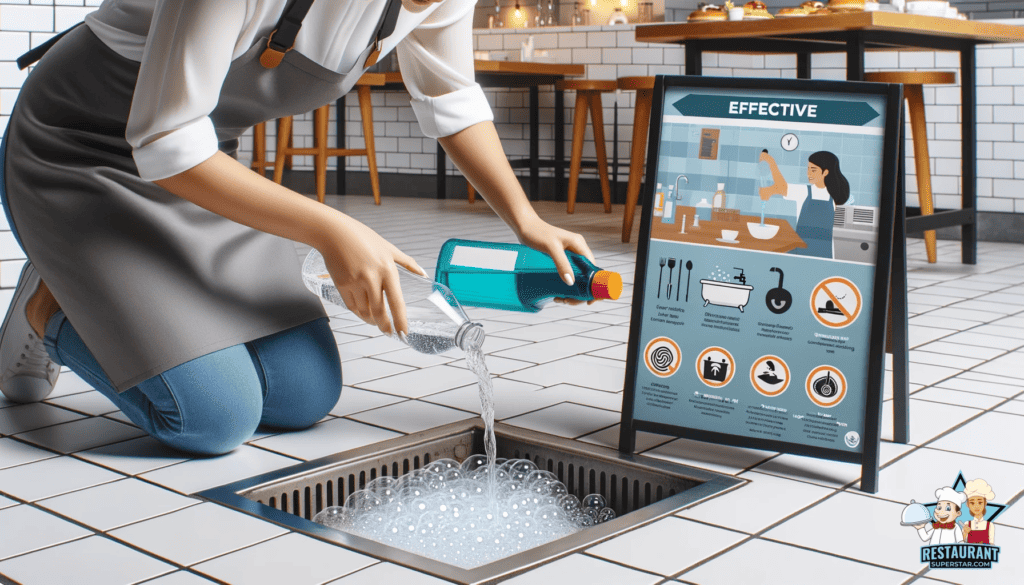
Unblocking a restaurant’s floor drain can sometimes require professional tools like a snake. Here’s my take on some tried-and-true methods:
- The old baking soda and vinegar trick: This combo is my go-to for tackling grease and dirt build-ups. To begin with, pour a cup of baking soda down the drain. Followed swiftly by a cup of vinegar. Allow 30 minutes to work its magic, then wash it with warm water.
- The trusty wet/dry vacuum: This machine can be a game-changer, especially for clogs of hair or food bits. Just pop the vacuum hose into the drain and switch it on. You’ll be amazed at how it pulls out the blockage, leaving your drain as good as new.
- Good old hot water: Sometimes, a good flush with hot water can melt away grease or other minor obstructions. However, avoid using boiling water; it might just harm your pipes.
- The dedicated drain plunger: It’s like giving your drain a mini workout! Seal the drain with the plunger and pump vigorously, dislodging surprising clogs.
- Store-bought drain cleaners: These can be a last-resort solution for those pesky clogs. Remember to handle them carefully since they can be harsh on you and the environment. Always stick to the guidelines on the label.
- Get a Trusted Plumber: If, after all this effort, your drain remains clogged, it might be time to ring up a trusted plumber.
And here’s a bit of wisdom from my experience in keeping restaurant drains clog-free
- Fit a mesh strainer over the drain to trap food scraps and such.
- Make it a habit to clean the drain, either with a brush or a plunger.
- Never, and I mean NEVER, dump grease or oil down there.
- Consider enzyme-based cleaners; they’re great at munching away grease and dirt.
- These simple pointers should keep your restaurant’s floor drains in shape, ensuring smooth operations.
Can I Pour Drano Down a Restaurant Floor Drain?
Yes, you can pour Drano down a restaurant drain, and it is very safe. However, if you use a bottle that does not clear the sewage backup, you will need a plumber’s service to use his snake.
Can you snake a Restaurant floor drain?
Yes, you can. For starters, it’s called a plumbing snake or, most times, a drain snake. It is a small, flexible piece of equipment that breaks up clogs that would not react to a plunger.
It’s not that hard, as all you have to do is:
- Open the drain cover
- Feed the drain snake down the tube
- Feed this all the way through
- Now, if you hit something hard just like that, it’s most likely that you’ve hit a 90-degree
- Turn or a bend on the tubing? You have to cut it off.
- Keep a distance of six inches or more from the drain if possible.
- Lock it in place and then turn it
- And then unlock it again.
- Then, lift it back up and lock it in place.
- There would sometimes be when you get situations like where you’re turning, and the coil starts coiling right on itself.
- You have to let back a little bit, then do it again slowly, and don’t force it in and let it feed
- Then repeat the same thing: unlock it, pull up, lock it, twist it, and it’ll feed right through it.
- Keep doing this until you hit some soft spot or till you feel like you’ve reached the blockage.
- Then, you attach the drill and use the power drill to go through.
- Then you pull up and see what has been in there.
How Often Should Restaurant Floor Drains Be Cleaned?
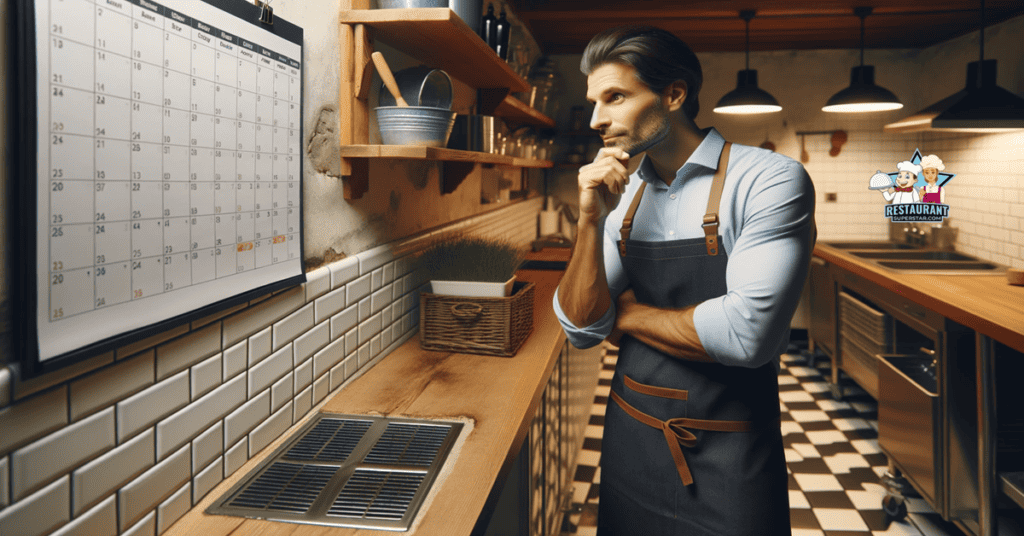
The restaurant floor drain should be cleaned monthly. This is the best course of action, even though not all plumbing disasters can be prevented. (for example, if your pipes were installed wrongly or weakened).
It’s neither too regular nor too far between to be forgotten quickly; the danger of clogs and other commercial drain issues can be significantly reduced if you set a day at the end of the beginning of each month to clear your drains.
I can’t over-emphasize how drain cleaning is crucial to keep your drain in good condition, but only a few people pay it the attention it requires.
Consider if you’re concerned about maintaining your drains in good condition for as long as possible.
Does Bleach Clear a Clogged Restaurant Floor Drain?
No. Even well-known brands of cleaning solutions should not be used. And that is according to the plumbing professionals.
These chemicals could be efficient for the short term, but if you’re not careful, they can cause expensive damage to your pipes.
Additionally, it would help if you never used bleach to clean your drain. Using bleach won’t dissolve the clogs, but it can kill the bacteria and eliminate odors.
But then the spoiler there is that if there is any remnant of bleach present in the pipes, it could combine with another chemical, such as ammonia, to form a hazardous gas.
How Do You Unclog a Commercial Floor Drain?
Try the following procedures while wearing rubber gloves to clear your floor drain. I’ll explain 5 ways you could unclog your commercial floor drain.
1 – Use Boiling Water
Most causes of drain clogging can be attributed to hair products and the hair itself. Pouring hot water in the drain can break down the clogs, making the chance of breaking down dried hair products high.
It will then dissolve and be swept away by the water flow.
However, the secret to unclogging successfully is to keep adding Water. You might have to wait a little while before doing it because it needs to pour around 8 cups of dale cap before the heart can start doing its magic.
Then, when you notice the drain flowing normally, turn your tap up and leave the water running for a while.
2 – Using the vinegar and baking soda
Using vinegar and baking soda is another method for unclogging particles down your drain.
To do this, you must pour 6 cups of baking soda into your sink drain, followed by an equal volume of thin apple cider white vinegar.
You can let the combination sit in the drain overnight and pour hot water to flush the drain the next day.
3 – You could ring to a wet vacuum and dry.
You can use a dry vacuum to turn it into a liquid that softens anything you can eat, that is if baking soda and boiling Water cannot complete the task.
Keep in mind you must call the vent with a towel.
Run hot water from the faucet for a minute to help seal the suction hose tightly to the sink, and wet the area around the drain so the fountain may be released.
Place those hoses over the drain in that position, turn the vacuum to its highest level, and wait; in less than a minute, hopefully, it will begin sucking that hose of yours.
4 – Use a snake or a wire hanger.
Before purchasing an easy-to-use drain snake at a hardware store, you should check your closets to see if you have any wire hangers; if so, open the hanger, avoid touching the bent end, and fairly straighten the wire.
Place the rube end into the drain opening, feed the hanger wire to the drain’s bottom, and tighten it to fit if necessary.
Note: the hook may divide the clog into pieces that can be flushed down the pipes with boiling water, or it may catch some block so you can take it off.
5 – Use a commercial drain cleaner.
While not all of these are environmentally safe solutions, you can apply your pre-made chemical drain with caustic soda or cleanser, or if you have no luck getting rid of that resistant pimple.
Use protective eyewear or Google and rubber gloves before using these items to avoid skin burns and eye discomfort,
The best benefits and drawbacks can be observed if you adhere to the recommendations on the container.
A bathroom exhaust fan should be left alone until the manufacturer gives further instructions.
Next, open the faucet and pour boiling water over the drain to flush out the hot water for one minute.
How do you Clean a Commercial Drain?
There are methods to do this, but the most effective one is to establish what is causing the slowdown or what kinds of things are clogging your drains so that the next time, you are aware and take the necessary precautions.
Video inspection of pipelines and sewer systems is getting increasingly important in the drainage system; they clean a commercial drain by using a digital camera that is attached to a rod, it extends the user with a tool that is inserted down the pipe to perform an inspection to see what is inside those pipes.
Accurate time tracking and listing are possible with the plumbing camera attached to the screen.
This plumbing camera will make it easier to see obstructions in pipes and sewer systems as well as damage to them promptly in residential and commercial structures,
An optical instrument called a borescope uses a rigid or flexible tube with an earpiece or screen on one end and an object lens or camera on the other.
A technician will use a steel cable to snake through block lines. This helps to resolve simple drain issues and plays a hand in diagnosing more difficult ones.
The use of a video camera inspection to help identify the root cause of particularly tricky drain issues without digging up the drain lines.
Floor Drain Maintenance Tips
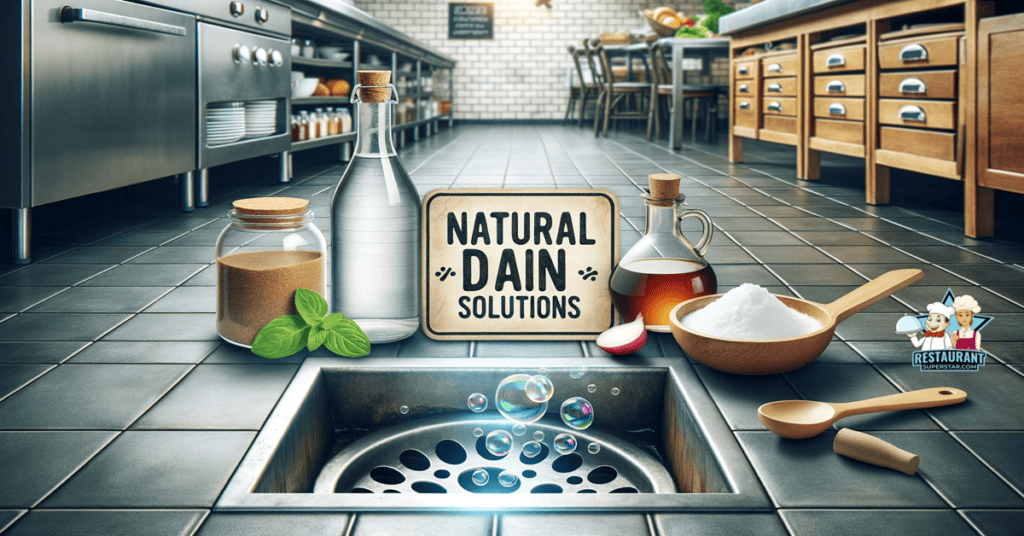
Use Soap and Water
Often, all you need to maintain your commercial floor drains is a bucket of water. Commercial floor drains could have dried out if the floors close to the clogged drain were not routinely wiped.
Hot Water is an economical way to save your drains.
The clog might be cleared by pouring boiling water down the drain into the trap, especially if it is made up of soap scum or grease.
It must be boiling Water, not hot tap water, as it will not work. Using hot water saves you from buying tools or materials to unclog your drain.
Be Careful of Your Drains Drying Up
To avoid dried-up commercial floor drains, you need to run Water through all sinks sometimes or occasionally pour Water down floor drains. Doing so once a month, the floor drains will stay moist, and the scent won’t escape.
Don’t accidentally clog Up Your Commercial Floor Drains.
Of course, we shouldn’t forget the several occasions when a food inspector showed up in the middle of a drain backup, forcing the temporary closure of a restaurant.
It’s also vital to remember that the drainage system of the building is linked to numerous business levels.
This could imply that a clogged floor drain renders some steam cleaning equipment and commercial dishwashers useless.
Don’t Ignore Stock Room Drains.
Floor drain cleaning shouldn’t be disregarded even in stock rooms or other largely inactive areas. Cleaning these commercial floor drains is still crucial.
They may eventually become debris-filled and dry out over time, causing your sewer line to clog. Although they are simple to avoid, clogs can be problematic and expensive.
Clean Your Drains Regularly
The best defense against potentially expensive and bothersome issues is preventive care.
The best method of drain maintenance is to clean your commercial floor drains once a month.
It will be simple to remember to perform preventive floor drain maintenance by marking your drains, and you can lower your risk for clogs and other issues.
Unsure Of How To Clear A Clogged Floor Drain? Speak to the experts.
Your floor drain might be cleared using soapy water, a drain snake, or an auger to clear obstructions.
Nevertheless, some instructions require expert assistance. It would be ideal if you considered having a professional inspect your restaurant floor drain pipes at least once a year.
Conclusion
While there are many things, you can do to maintain your floor drain and care for your drain pipes, having a skilled plumber come by once a year may be a massive benefit for your property.
Jeff Smith is a Restaurant Consultant with over 20 years of hospitality experience ranging from server to owner and general manager. He focuses on Restaurant POS technology as well as restaurant marketing. Make sure to check out our world famous restaurant resources page for a comprehensive offering of hand picked resources and tools to help your business. You can also check out some of our other restaurant business articles.

